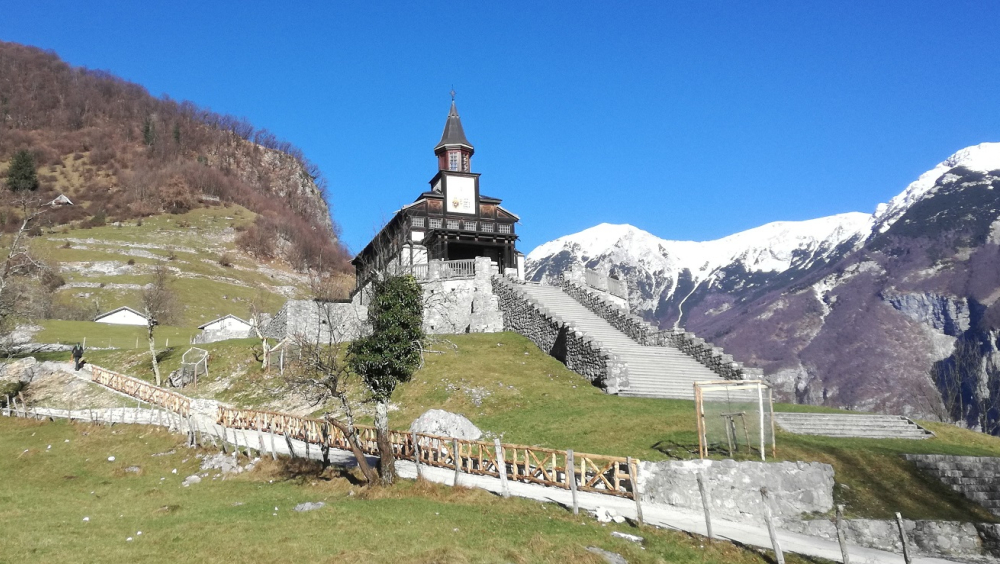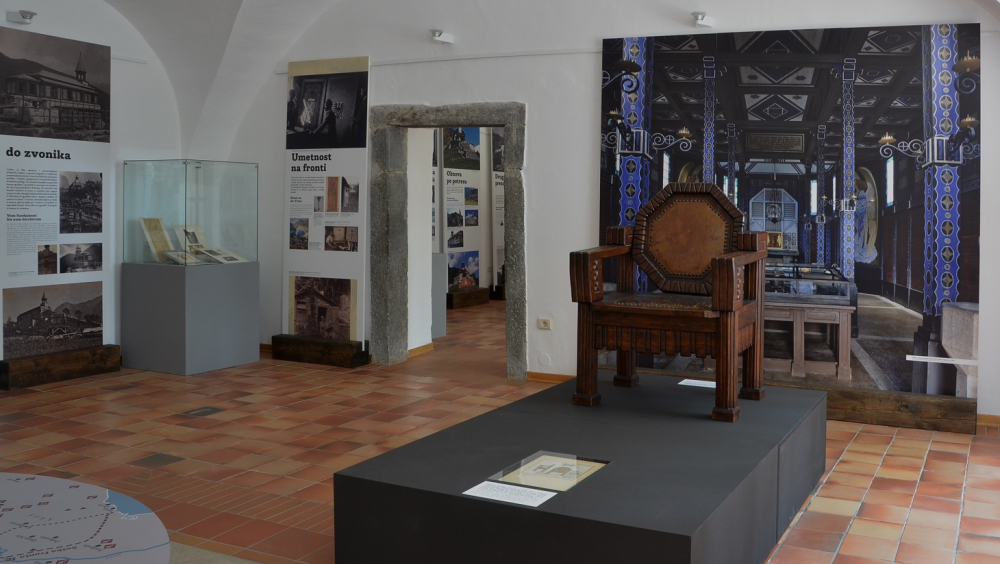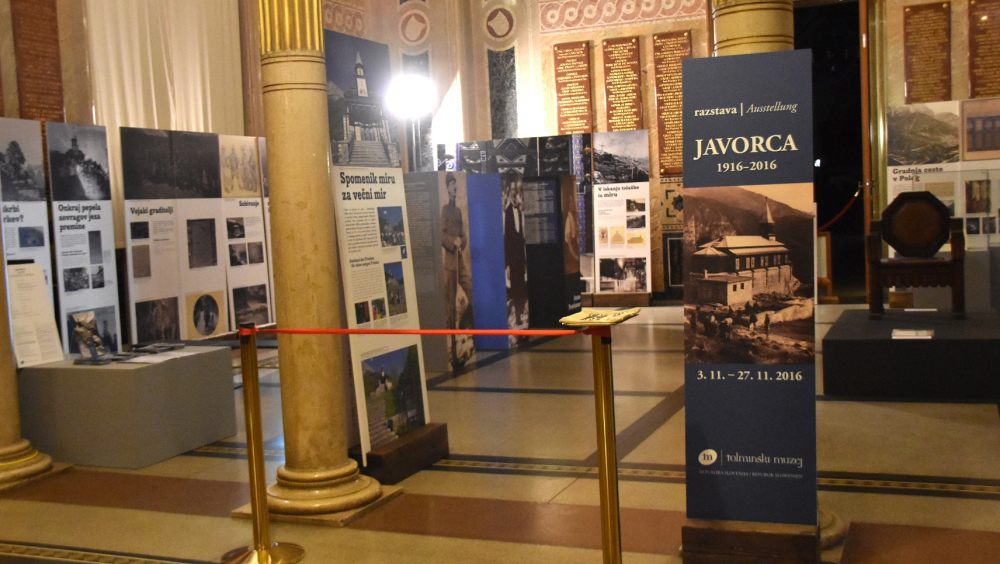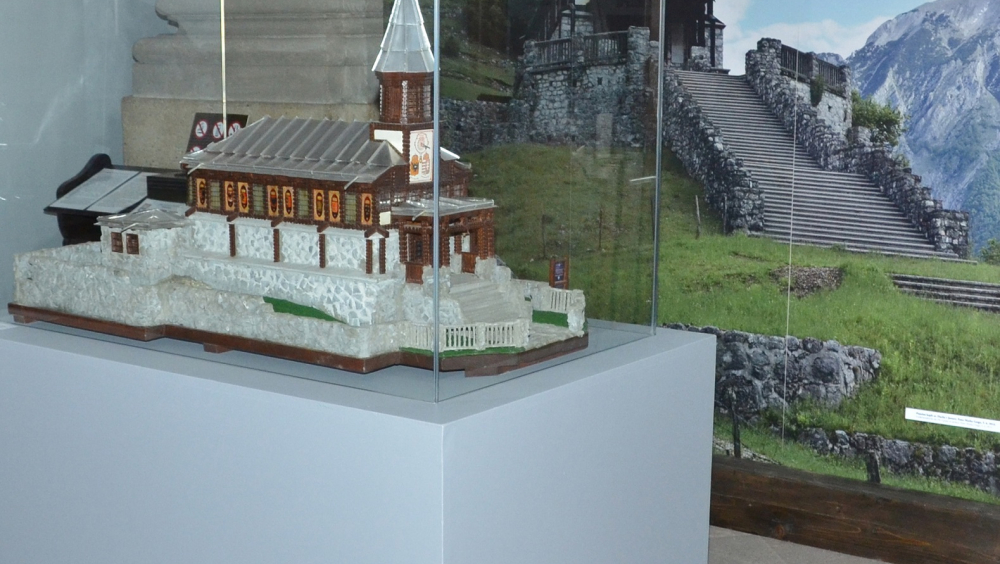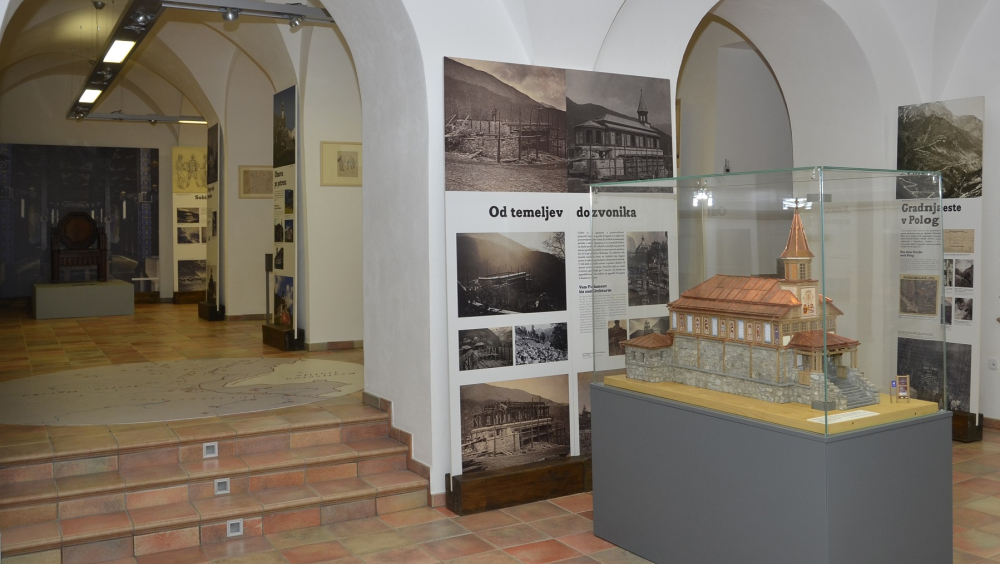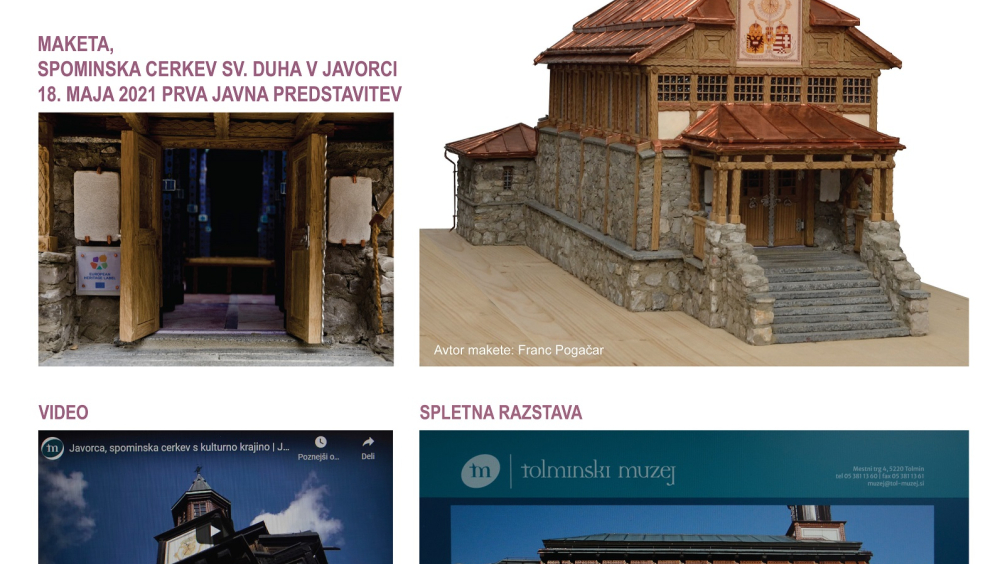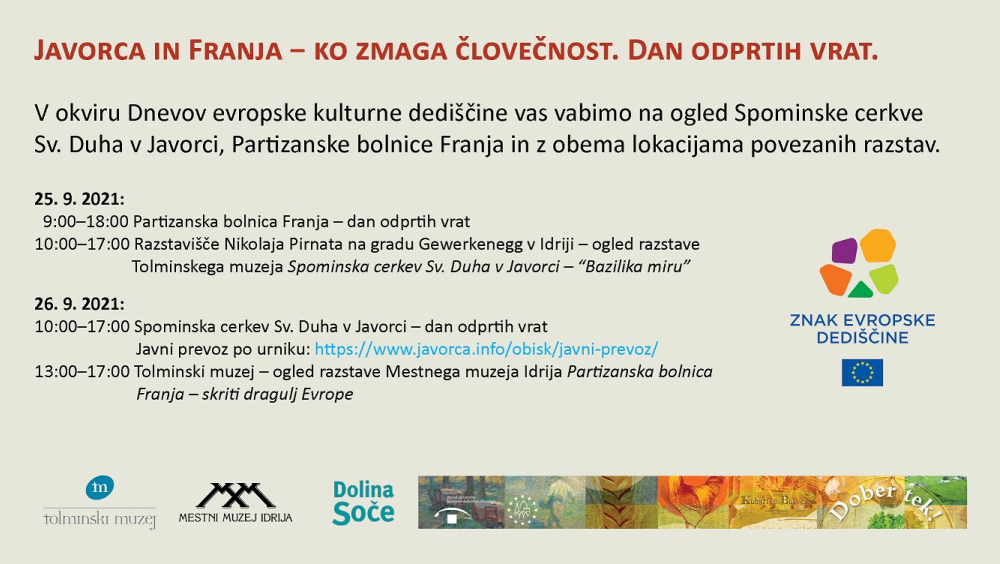Memorial Church of the Holy Spirit in Javorca - "the Basilica of Peace"
I would like to share the story of Europe’s unique Heritage, Memorial Church of the Holy Spirit in Javorca, which was built on the edge of WW1 Isonzo battlefield and still inspires with an extraordinary message of peace and importance of solidarity. The church is situated within the Triglav National Park in the Julian Alps in Slovenia, not far from the Austrian and Italian borders. The memorial church was built by soldiers of the 3rd Mountain Brigade of the nationally diverse Austro‑Hungarian army. The builders put their trust in the ideas and plans of the Viennese artist Remigius Geyling. They wanted to build a permanent monument in memory of fallen comrades. In 1916, they built the church with voluntary contributions and voluntary work. More than hundred years later, the Church in Javorca still stands as a reminder of what happened in WW1. Javorca, the place of European Remembrance, represents a call for peace and reconciliation and testifies to the solidarity and unifying power of joint artistic work. Javorca is a symbol of individualized memory, memories of 2565 fallen Austro-Hungarian soldiers. It is also a place of inter-religious Tolerance. At least, four masses take place there every year. Javorca’s story inspires and encourages us to spread this extraordinary European story. Also amazing is the story of the models (miniature) of the Javorca Memorial Church, made by authors of different generations, which had a central place at exhibitions in Vienna in 1917 and a hundred years later in Tolmin (SI), Vienna (AT), Gorizia (IT), Villach (AT), Prague (CZ), Rijeka (HR) and Idrija (SI). The Tolmin Museum travelling exhibition Memorial Church of the Holy Spirit in Javorca – Hundred Years of “the Basilica of Peace”, digital exhibition, promotional activities and pedagogical programs, are good examples of how to expand the impressive story of the European Heritage Label site, Javorca Memorial Church and its cultural landscape
The story of Javorca dates back to the WW1. Many soldiers fell on the Isonzo battlefield in 1915, so the Austro-Hungarian soldiers of the 3rd Mountin Brigade wanted to build a permanent monument in memory of the fallen. They were convinced by the idea of Vienna artist, Remigus Geyling (1878–1974). In March 1916, they began arranging the location in Javorca in the Tolminka River valley, and on April 4, they laid the foundation stone. The memorial church was built with voluntary contributions and voluntary work of soldiers of the brigade of the XV Austro-Hungarian Corps. The site manager was a Hungarian, Géza Jablonszky (1876–1945). Wooden parts of the altar are the work of a Tyrolean carver, Anton Perathoner (1888–1965). Around thirty craftsmen in military suits usually worked at the site at a time. The church was inaugurated on 1 November 1916. It was built in 184 days, with an apse that is 18 metres long and 7.4 metres wide, with seventy-eight steps leading to the church. It is impressive that they managed to build it in such a short time and during the worst fighting in the immediate vicinity. The church provided sanctuary to soldiers of various nationalities and religions, who were looking for solace and peace.
The church was set in a mountain environment with an extraordinary sense of place. On the outside, walls of the church there are twenty coats-of-arms of Austro-Hungarian Lands. At the entrance to its interior, visitors are taken over by a unique Art Nouveau-style space and a beautiful combination of dominant colours: blue, black, gold and a bit of white. Images of two angels stand out in front of the altar. Geyling drew it depicted the face of his wife. But, oak panels with 2,565 names of fallen Austro-Hungarian soldiers (Romanians, Bohemians, Hungarians, Slovaks, Rusyns, Croatians, Slovenians, Austrians, etc.) are particularly striking. In 1934, Italy restored the building when during fascism the so-called Rapallo border was fortified (between Italy and the Kingdom of Serbs, Croats and Slovenians). At the entrance, the inscription “Ultra cineres hostium ira non superest” (Beyond the enemy’s ashes anger subsides) was added. After WW2 this area belonged to Yugoslavia. Its regime was unfriendly to church, but a second restoration was carried out in 1980–1982, due to public pressure. From 1991 onwards, the area has been part of Slovenian state. In 2004–2005 a third major, state-funded restoration followed, and in 2016 the fourth.
The church in Javorca received a lot of attention during its construction, and in 1917 it was presented in Vienna’s Prater. Geyling made a model of Javorca for that purpose and probably also an honorary chair made by Perathoner according to Geyling’s plan. The model and the honorary chair also had an important place at the exhibition prepared by Tolmin Museum in 2016. The first one, exhibited in years 2016-2019, was made by a local Janko Rutar, student of the Secondary Woodworking School. In 2021, the Tolmin Museum enriched the exhibition with a new impressive model with exterior and interior details, made by 84-year-old Franc Pogačar. While the church in Javorca was built in about half a year in the midst of the worst fighting, it took Mr. Pogačar two and a half years to make the model. The authors of two generations were so enchanted by the church that they set about making a demanding miniature monument.
It is also important to mention that Remigius Geyling, designer of the church, monitored Javorca’s condition even after the WW1 and WW2 and that he passed on a special attitude towards Javorca to his grandchildren. They both like to return to Posočje region and Javorca.
A unique monument of peace and a symbol of unity, despite serious challenges in a rough mountain environment, preserve its appearance and purpose. With its outstanding message, supported by the Latin inscriptions PAX (peace) and ‘Ultra cineres hostium ira non superest’, encourages visitors to reflect upon the meaninglessness of wars. Today’s coronavirus pandemic, however, it teaches us about the importance of solidarity in difficult life’s trials.
The church has survived fascism and communism and experienced ups and downs in four countries (Austro-Hungarian Empire, Italy, Yugoslavia, and Slovenia). It still maintains its purpose. Four masses take place there every year, Catholic and Orthodox. Due to the sensitive location of the church within the National park, the Tolmin Musuem presented its European story to the general public with travelling exhibition Memorial Church of the Holy Spirit in Javorca – Hundred Years of “the Basilica of Peace”, digital exhibition, a bilingual monograph, pedagogical programs and various events. The first presentation of the exhibition in Slovenia was followed by guest exhibitions in Austria (Vienna, Villach), Italy (Gorizia), Czech Republic (Prague), Croatia (Rijeka) and Slovenia (Idrija). In 2017, Memorial Church in Javorca joined the company of 48 European Heritage Label sites (EHL sites). It received the EHL, because it is a unique place to remember fallen soldiers regardless of their origin and culture. It expresses the call for peace, reconciliation and symbolise the solidarity and unifying power of collaborative artistic creation and construction.
The memorial church invites visitors to admire its beauty and ponder its fragile but moving anti-war message. Read more about Javorca here - http://www.tol-muzej.si/javorca/en/. In 2022, the Tolmin Museum plans to host the exhibition again in Slovenia (Stična, Slovene Museum of Christianity – candidate for EHL) and to prepare new promotional materials and worksheets for schoolchildren.
Austro-Hungarian soldiers of different nationalities and religions built the church in Javorca, a unique European Art Nouveau architectural jewel, in wartime. Viennese artist Remigius Geyling, Hungarian construction manager Géza Jablonszky, Tyrolean carver Anton Perathoner and many other craftsmen volunteered to join the construction. They wanted to erect a permanent monument to the fallen soldiers, regardless of their origin and culture. Javorca expresses the idea of pacifism and is the place of Remembrance for nations that fought on the Isonzo (Soča) Front in WW1. Names of the fallen inside the church convey individualized remembrance. Memorial Church in Javorca symbolizes the call for peace, reconciliation and testifies to the unifying power of collaborative artistic work. It reminds us of European values (solidarity, human dignity, tolerance).
The significance of the church and its cultural landscape outlived three changes of state borders and the eras of fascism and communism. More than hundred years later, the message is still relevant and at least four masses are still held in the church every year. Due to its important role in the history and culture, it is on the list of European Heritage Label sites. The site belongs to nations that fought here and indirectly to all Europeans. Its history is important for regional, cross-border and general history of Europe. The church’s symbolic language of the memorial message is universally understandable, which contributed to its preservation. The memorial church with its intimacy, personal touch, and immediacy it addresses contemporary Europeans. Today, Javorca represents a place for meeting and jointly remembering those who lost their lives at the Isonzo front. It invites visitors to admire the church in a beautiful mountain landsape and ponder its fragile but moving anti-war message, warning us all to never stop striving for peace.
European significance of the site became clear to people in 2007 when it was awarded European Heritage Label – intergovernmental initiative, and in 2017 when it was awarded with European Heritage Label. Tolmin Museum has prepared an exhibition and a bilingual monograph about Javorca to raise the awareness of Tolmin locals and Europeans. The hosting of the exhibition in seven European cities contributed to this. The grandchildren of Remigius Geyling donated the archive material of the Geyling family to the Tolmin Musem, the granddaughter also attended the opening of the Tolmin Museum travelling exhibition in Vienna, Villach and Prague.
